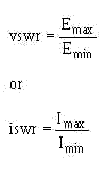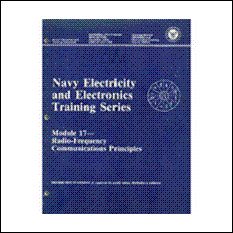RF Antennas
INTRODUCTION TO RF ANTENNAS
In this section you will study the general characteristics of microwave rf antennas that are widely used in radar and communications applications. The basic principles of operation of microwave antennas are similar to those of antennas used at lower frequencies. You might want to review the Antenna Principles presented in our earlier tutorials, Introduction to Wave Propagation, Transmission Lines, and Antennas, at this time. Pay particular attention to basic antenna principles in for a review of microwave antennas.
Antennas are devices used to
radiate electromagnetic energy into space. The characteristics of
transmitting and receiving antennas are similar, so a good transmitting
antenna is often a good receiving antenna. A single antenna performs
both functions in many modern applications.
ANTENNA CHARACTERISTICS
Since the operating principles of low-frequency and microwave rf antennas are essentially the same, the electrical characteristics are also very similar. You will need a fundamental knowledge of radar and communications rf antenna electrical theory in your rf antennas maintenance work.
RF antenna theory is primarily
a design consideration of rf antennas size and shape requirements that
depend on the frequency used. A brief description of antenna electrical
characteristics is sufficient for the needs of most students of
electronics.
Antenna Efficiency
The effectiveness of an antenna depends upon its ability to couple or radiate energy into the air. An efficient antenna is one which wastes very little energy during the radiation process. The efficiency of an antenna is usually referred to as the POWER GAIN or POWER RATIO as compared to a standard reference antenna. The power gain of an antenna is a ratio of the radiated power to that of the reference antenna, which is usually a basic dipole.
Both antennas must be fed rf energy in the same manner and must be in the same position when the energy is radiated. The power gain of a single dipole without a reflector is unity (one). An array of several dipoles in the same position as the single dipole, and fed with the same line, has a power gain of more than one.
The effectiveness of an entire transmitting/ receiving system depends largely on impedance matching between the elements of the system. Impedance matching is particularly critical at the antenna connection. If a good impedance match is maintained between the system and the antenna throughout the operating frequency band, power transfer to and from the antenna is always maximum. The transmission line or waveguide used to transport energy to and from the antenna should have a characteristic impedance equal to that of the antenna. A proper impedance match allows all available power to be absorbed and radiated by the antenna without reflections back down the line.
If you have a transmission line or waveguide with an impedance mismatch at the termination, standing waves are set up by the reflections. Standing waves cause losses in the form of unwanted radiations, heat losses in transmission lines, and arcing in waveguides.
The STANDING-WAVE RATIO, abbreviated swr, is a way to measure the degree of mismatch between the transmission line and its load. The swr can be expressed as a ratio of the maximum and minimum values of the current or voltage in the standing waves that are set up on the lines as follows:

A transmission line or waveguide approaches a perfectly matched condition when the swr approaches a value of 1. A ratio that is a little higher than 1 is usually acceptable in practical applications.
Measurement of swr is the only practical method of detecting an impedance mismatch between a transmitting/receiving system and its antenna. As such, the system swr is an important indication of the overall efficiency of the system during operation.
The line impedance can usually
be matched to the antenna at only one frequency. However, the swr will
NOT become too high if the antenna is used over a small range of
frequencies and the line is matched to the center frequency.
Antenna Directivity
You can divide antennas into two general classes based on directivity, omnidirectional and directional. OMNIDIRECTIONAL antennas radiate and receive energy from all directions at once (SPHERICAL WAVEFRONT). They are seldom used in modern radar systems as the primary antenna, but are commonly used in radio equipment and iff (identification friend or foe) receivers. DIRECTIONAL antennas radiate energy in LOBES (or BEAMS) that extend outward from the antenna in either one or two directions. The radiation pattern contains small minor lobes, but these lobes are weak and normally have little effect on the main radiation pattern. Directional antennas also receive energy efficiently from only one or two directions, depending upon whether it is unidirectional or bidirectional.
Directional antennas have two characteristics that are important to you in radar and communicantions systems. One is DIRECTIVITY and the other is POWER GAIN. The directivity of an antenna refers to the NARROWNESS of the radiated beam. If the beam is NARROW in either the horizontal or vertical plane, the antenna has a high degree of directivity in that plane.
An antenna may be designed for high directivity in one plane only or in both planes, depending on the application. The power gain of an antenna increases as the degree of directivity increases because the power is concentrated into a narrow beam and less power is required to cover the same distance.
Since
microwave antennas are predominantly unidirectional, the examples you
will study in this chapter are all of the unidirectional type.
Reciprocity and RADAR fundamentals
Reflector-antennas: truncated, orange-peel, and cylindrical paraboloids
Corner-Reflector: Horn Reflectors, Lens antennas, Delay Lens, and Loaded Microwave Lens
Antenna-Arrays, Frequency sensitive antennas, and Basic Slot Antenna and Its Complementary Dipole















